we felt the stillness broken by so many statues, which seemed to stare at us as we climbed the hill.
Located thirty minutes from Toyota City in the Okuramachi mountains in Aichi Prefecture, the temple complex Iwatoyama Kanzeonji (岩戸山観世音寺) is a historic religious site with a main temple, built in 1178, and a few smaller temples. There's also a cave, called Fūtendō (風天洞), named for the Japanese god of wind, and surrounding grounds, which serve as a kind of outdoor gallery for hundreds and hundreds of religious carvings and sculptures.
I visited Iwatoyama Kanzeonji for the first time with a friend and her little boy. After parking at the foot of a small mountain, we were welcomed by figures of Kannon, the goddess of mercy, that lined the path from the entrance. Even though no other visitors were around, we felt the stillness broken by so many statues, which seemed to stare at us as we climbed the hill.
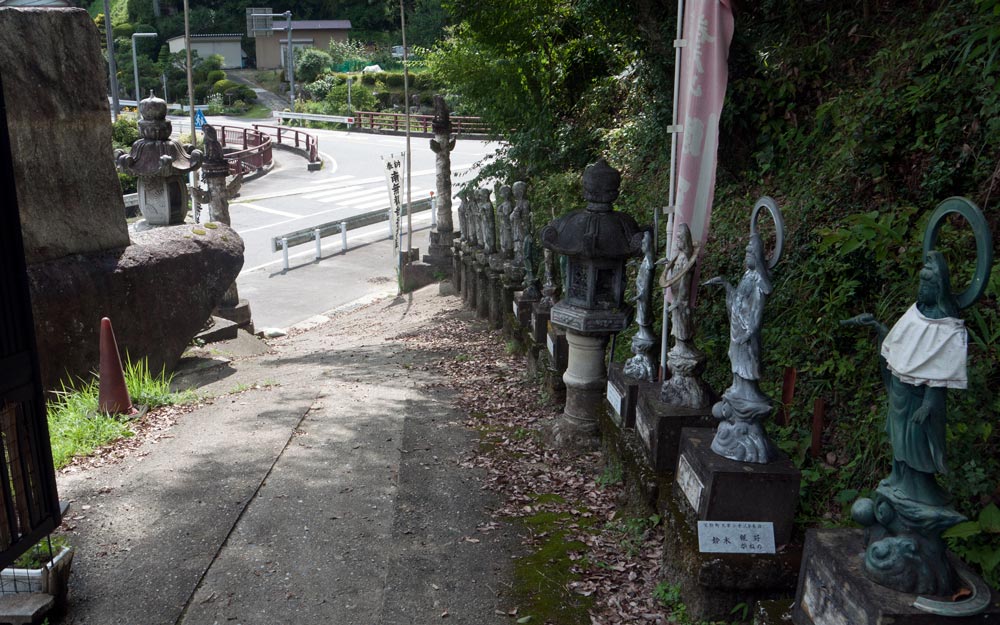
Built more than eight hundred years ago, the Iwatoyama Kanzeonji, like many Japanese temples, has an interesting history. It was closed for many years, but re-opened in 1978 with more statues than you can count—every one of which seemed to be along our path.
A Spiritual Path… of Statues
The statuary varied by group and type. There were Buddha, Kannon, and familiar figures from Japanese mythology. But there were some surprises too.
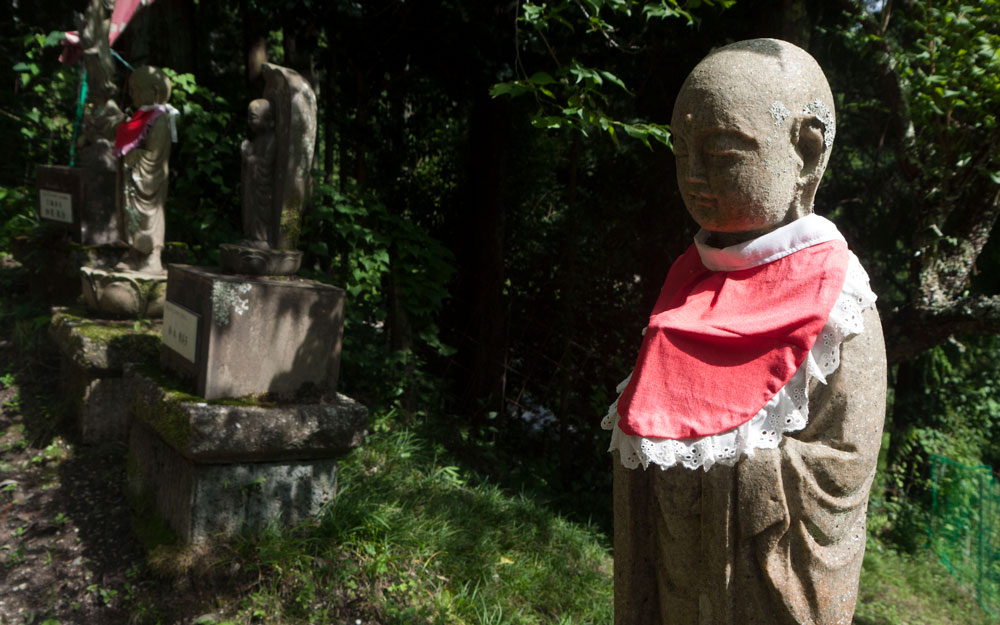
Many of the figures were instantly recognizable. We saw a number of Jizō, protectors of travelers, wearing red bibs and little smiles.

We found a group of tanuki with their big scrotums (which you can read all about in an article we wrote).
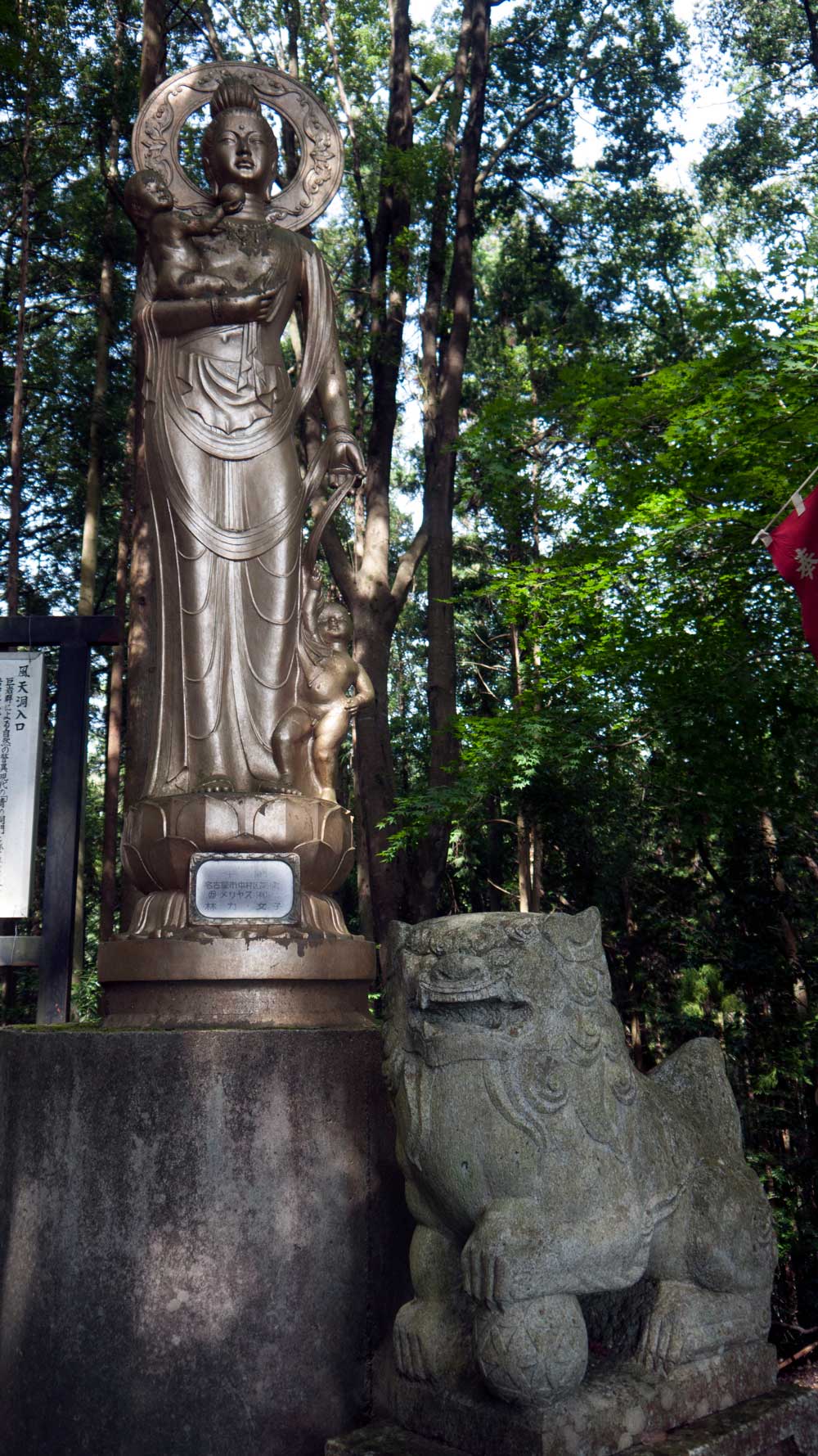
Also, there was a sexy mom with two babies walking a komainu, Japan's mythical lion dog. (Actually, the sexy mom was Kannon again, portrayed in a traditional way with two attending children.)

The trees offered us a nice bit of shade, and we enjoyed chatting while we walked.
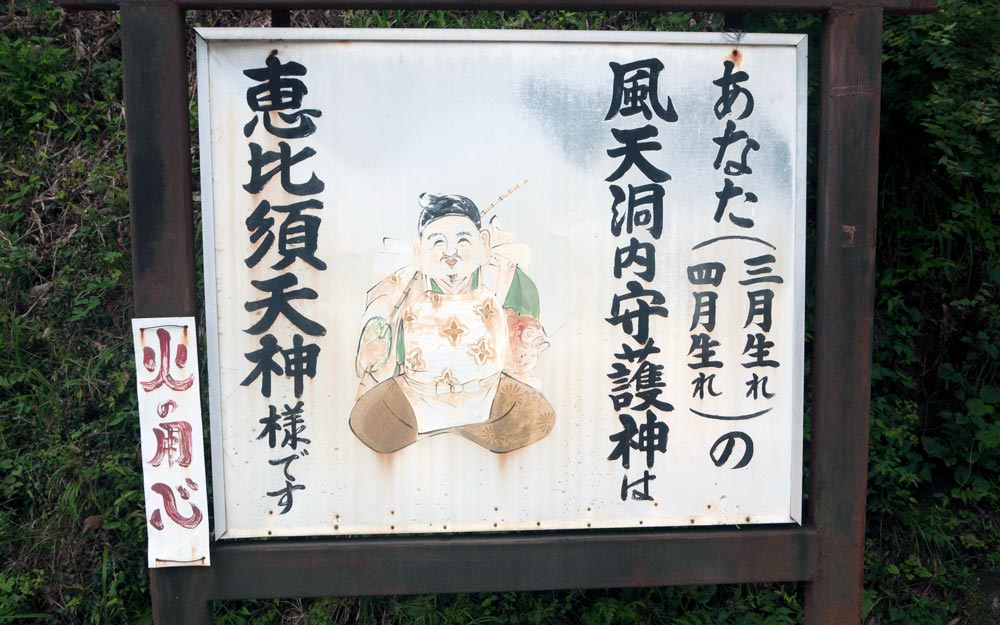
Then suddenly, we came to a sign announcing the arrival of our birth month's Guardian God. Cool! It was actually a group of statues, and I found out mine (April) was Ebisu, the Shinto god of fishermen, merchants, and wealth.
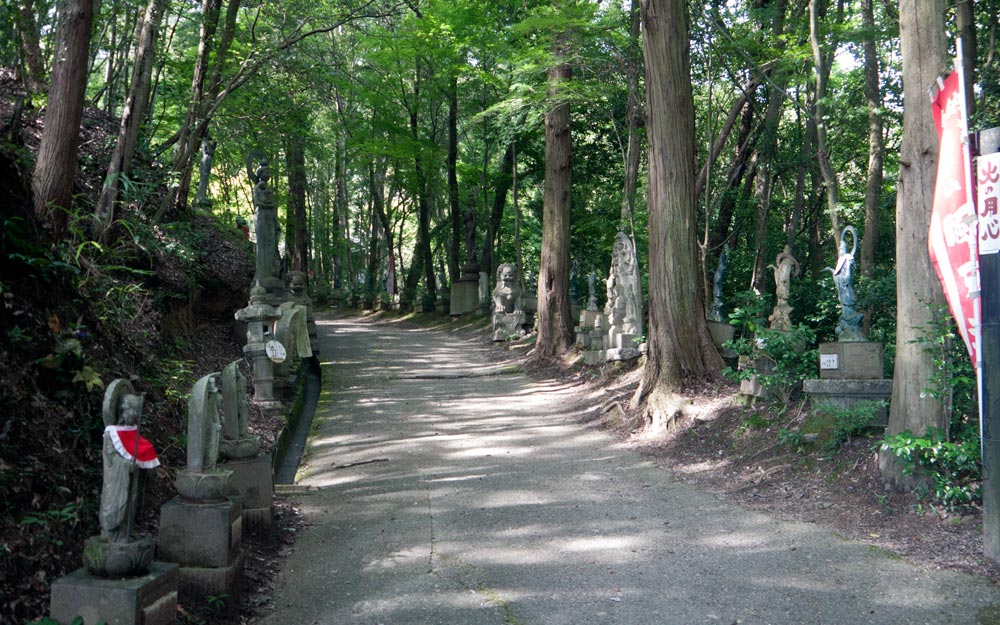
After that: more statues. We began to wonder where the heck the temples and the cave were!
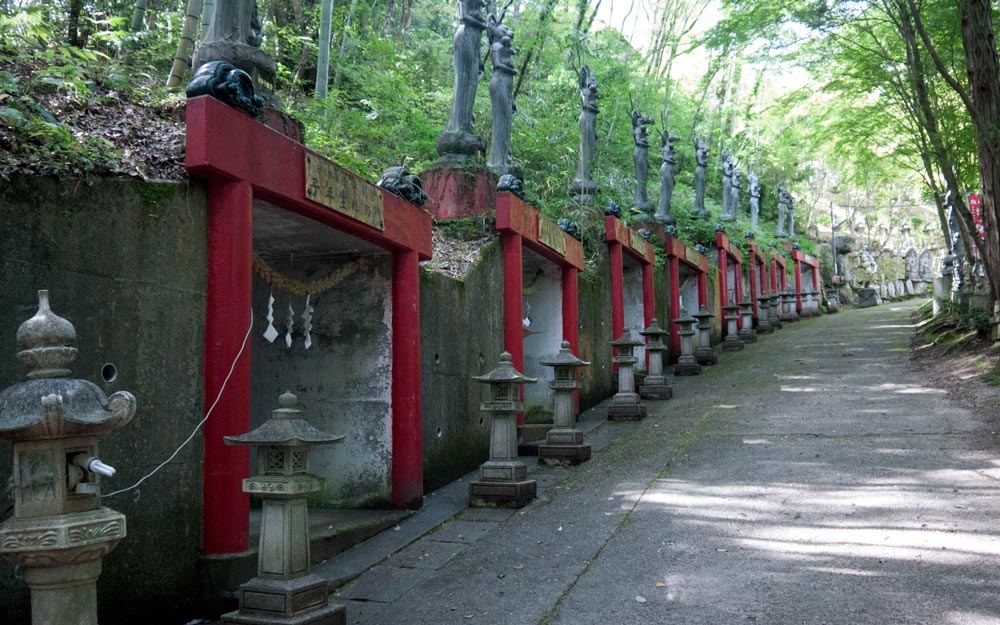
When we saw a row of red torii gates, we were sure we'd arrived at something special. My heart leaped! Exhilarated, I looked inside the gate and saw…
…another statue. Several more statues, in fact.
The figures on top of the gates were actually pretty neat. So gallant! My favorite was the rooster god with two babies. In Japanese mythology, a rooster was said to have tempted the sun goddess, Amaterasu, out of her cavern, bringing light back into the sky after a period of deep darkness.
Summoned by the Wind God
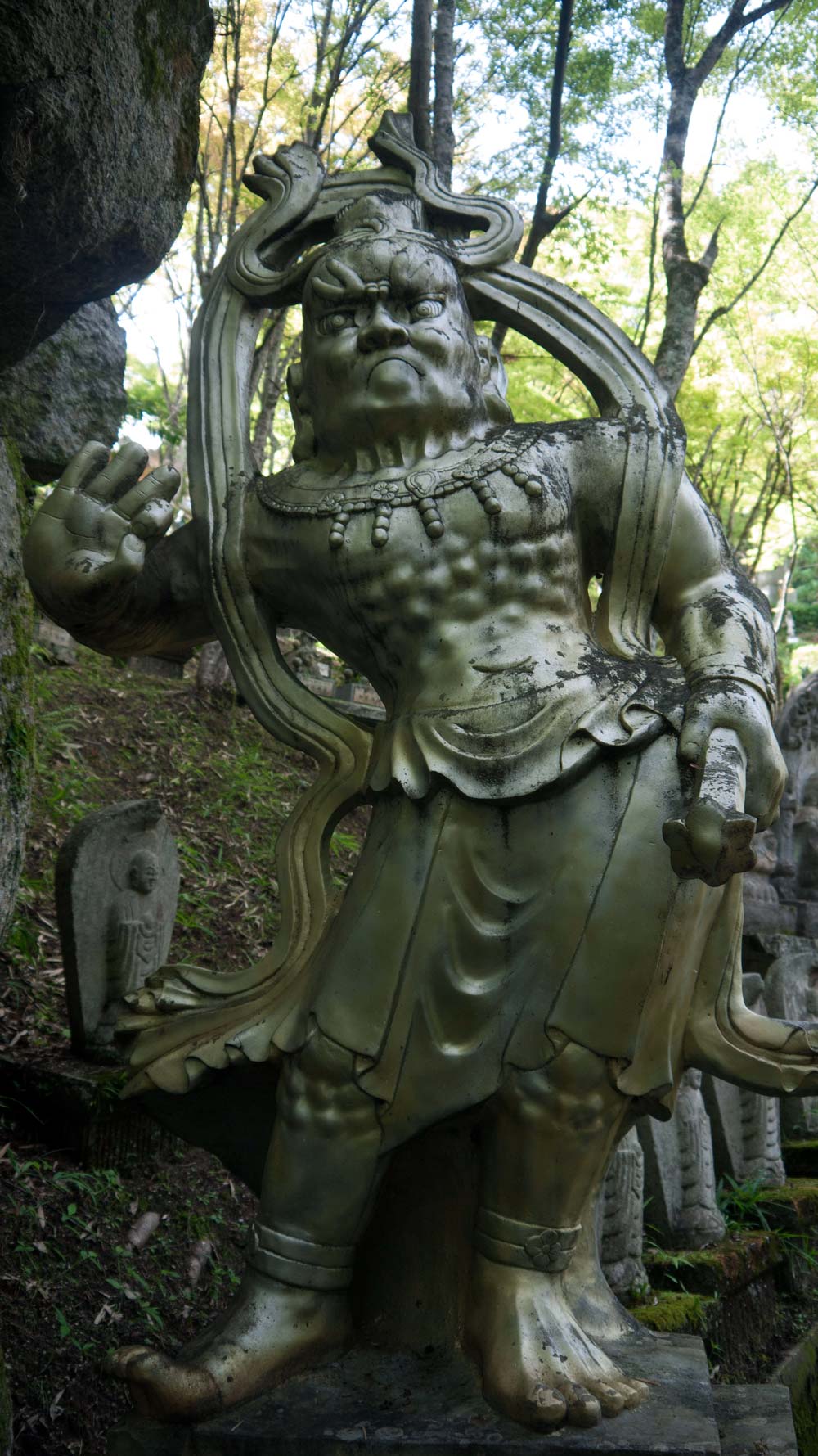
"¥2,500!?" Our smiles melted. It was too expensive! But we'd already come all this way…
We were getting a little tired of statues by this point. Most of them were serious and grim, but suddenly we encountered a comical figure of the Japanese God of Wind. What was he doing here? Then we remembered the name of the cave: Fūtendō (風天洞).
My friend was the first to make the connection: "That's why it's called Fūtendō!" The 風 and 天 in 風天洞 mean "wind" and "heaven," respectively. Fūtendō, we figured, must be close by.
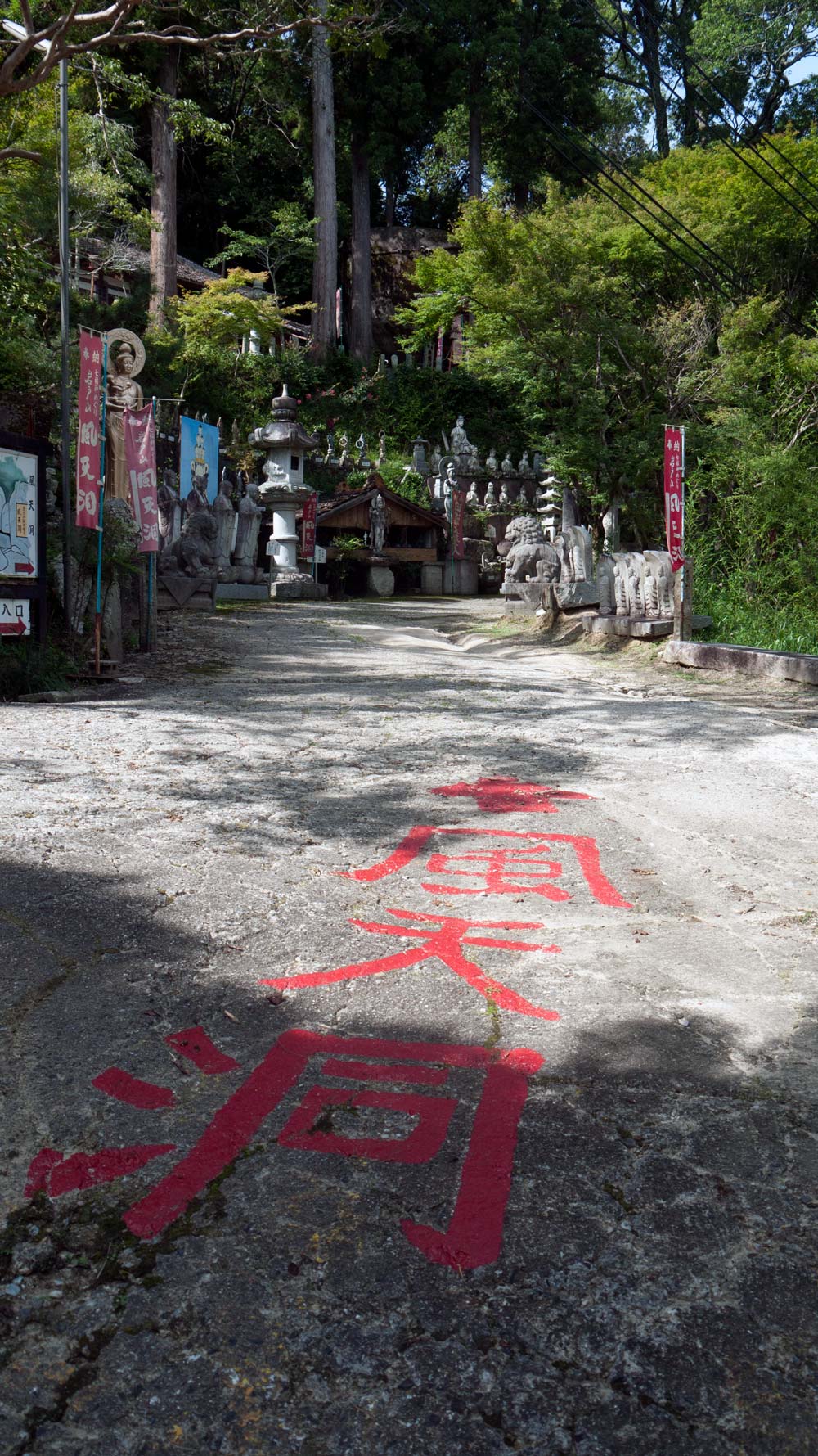
Sure enough, we soon saw a sign:
← 風天洞 (Fūtendō)
(Later, we learned that the cave was actually named Fūtendō because construction workers, with their tenugui towels hanging from their necks, looked like the God of Wind.)
"Whee! We arrived at Fūtendō!" We trotted along, excitedly, but soon slowed to a walk again when we realized we were still a ways away.
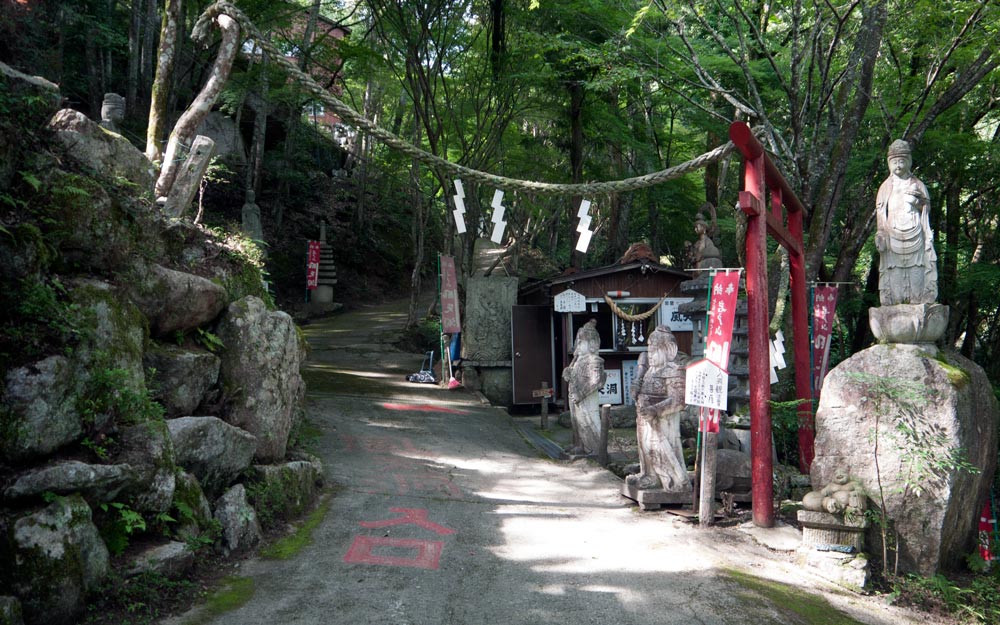
Eventually, the entrance appeared. Next to it was a little building with a woman inside. She was the first non-statue person we'd seen, and we gave her a friendly こんにちは (hello) and a big smile.
"Hi!" she said, smiling back. "Two adults and one child? That'll be ¥2,500."
"¥2,500!?"
Our smiles melted. It was too expensive! But we'd already come all this way and really had no choice but to pay. We felt ripped off.
"This freaking cave better be amazing," we grumbled, passing under another torii gate and down a set of stone stairs.
Past some mossy rocks and white statues, the cave's entrance was small. It looked dark inside, and we were worried about the little boy. But he didn't seem to mind, and so we stepped inside. It was dark, and cold, and the footing was uneven. It was a real, natural cave!
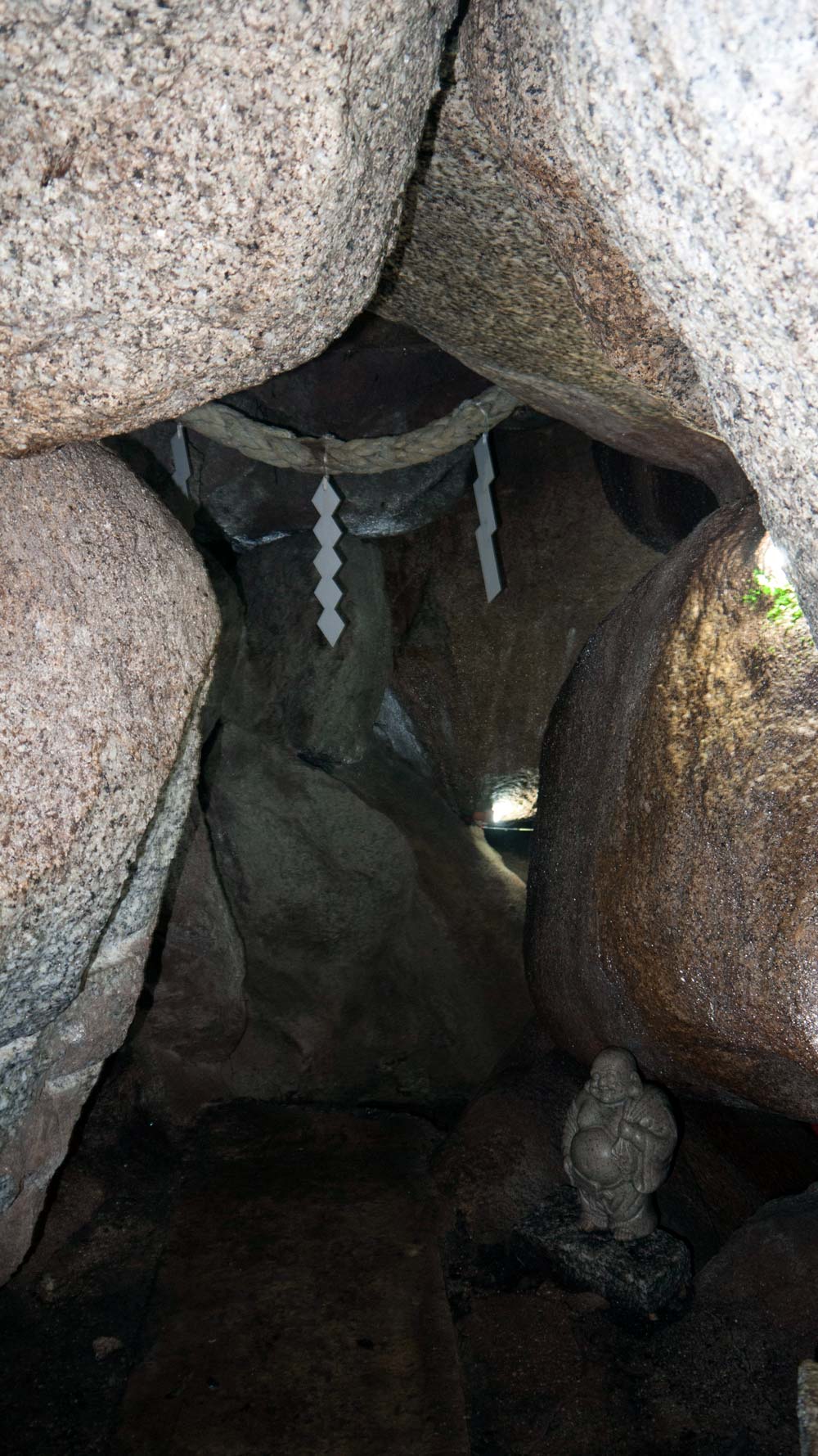
Without modern-day technology, we would never have seen the little man at the bottom of the stairs offering a foot massage. It was free, and it was spectacular!
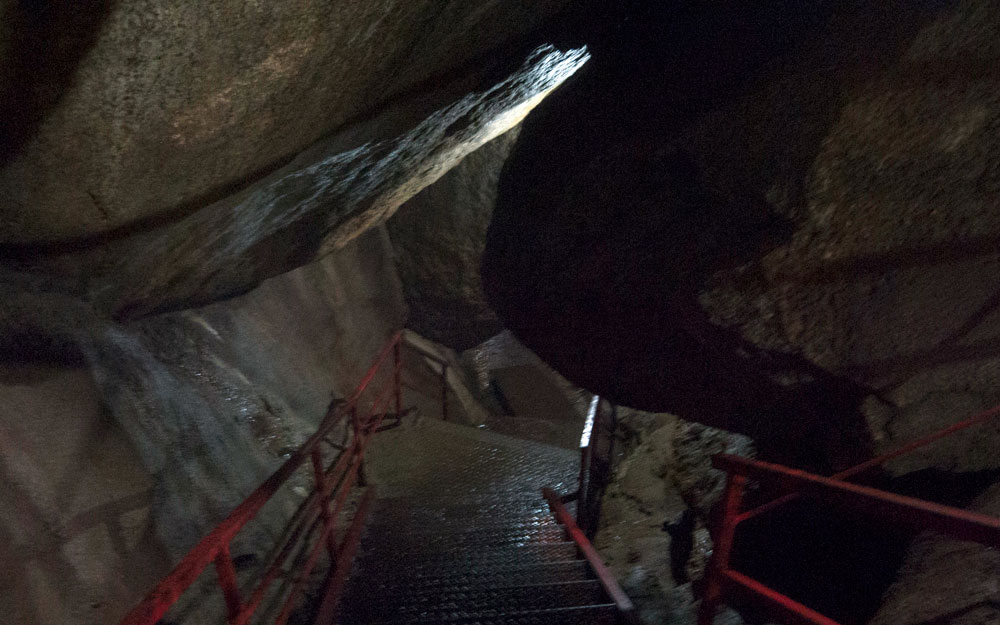
Further in, it got even darker. Electric lights lit certain turns and grottos, but the man-made stairways were wet and slippery. The temperature kept dropping, and we wished we had brought jackets.
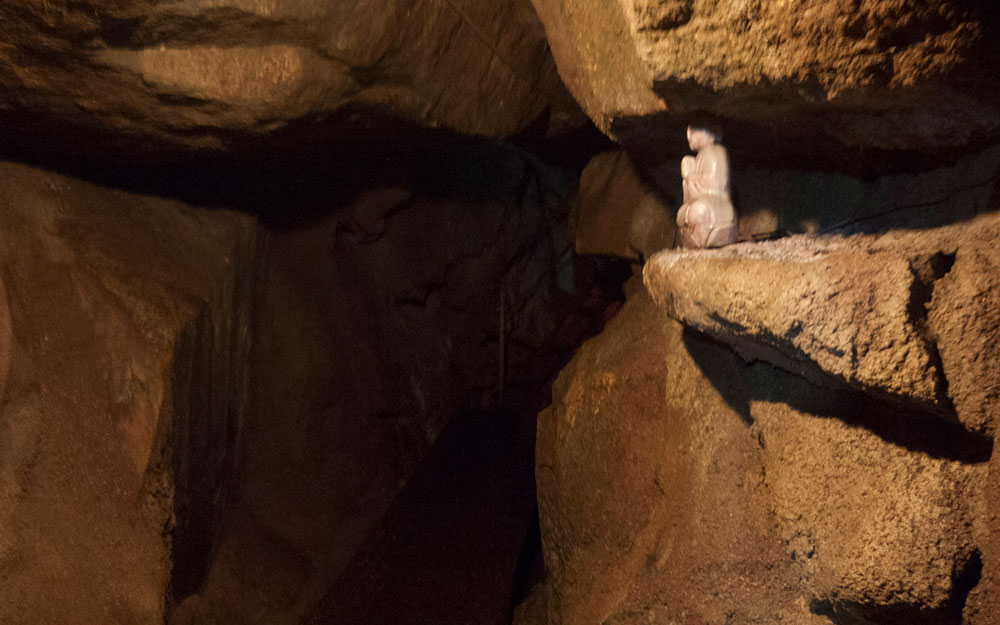
Aside from the danger and the chill, though, exploring the dark cave turned out to be interesting. We quickly forgot our initial resentments about the admission fee.
A leaflet we'd been given at the entrance said that the cave lay inside a bunch of granite boulders deposited by an earthquake or volcano many years ago.
We weren't too surprised to find a large number of statues in the cave as well. Here, though, they felt out of place, as if they were ruining the solemn atmosphere of the natural setting.

The cave is five hundred meters long and takes about twenty minutes to walk through. It took us longer because we were traveling with a kid, but our little guy didn't break down once, exploring such a dark, cramped place filled with strange figures.
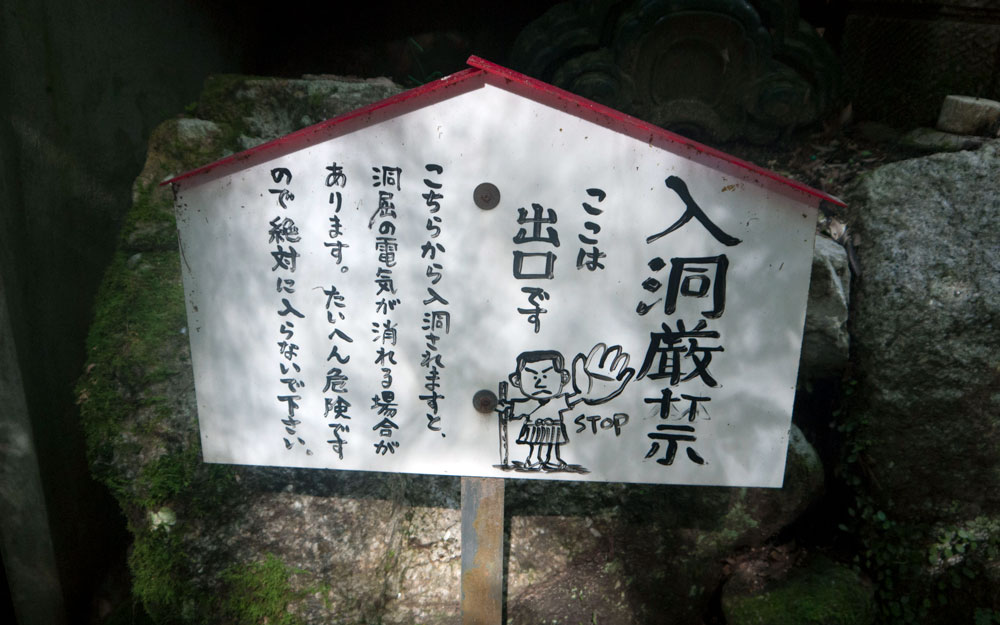
For anyone hoping to dodge the expensive admission fee, a sign warned that if you tried sneaking in anywhere besides the entrance, the lights in the cave may turn off, leaving you trapped in a subterranean pit full of statues.
The path leading out of the cave was lined with… statues.
And yet… the sculptures suddenly struck us as lovely! Maybe it was because we'd just come from a dark place. Beneath the sunlight filtering through the trees, they felt benevolent and beautifully integrated into their surroundings.
A Trail of Temples
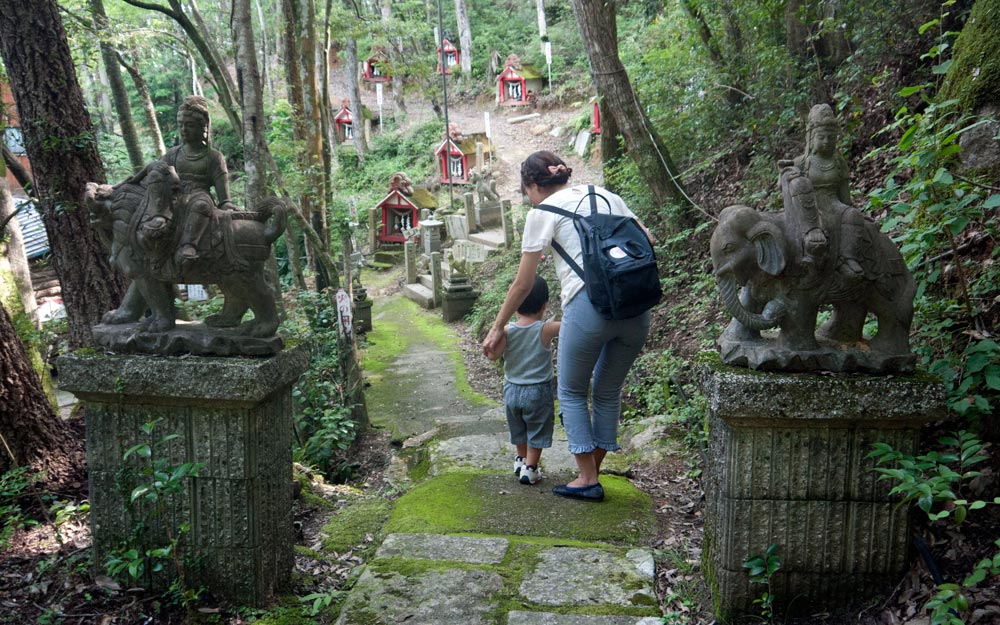
Despite our long trek up the mountain and through the cave, we still hadn't seen any temples, so we set off to find them.

Along the way, we discovered a collection of small, wayside shrines called hokora (祠) guarded by statues of Inari foxes. Inari is the deity of food, farmers, and the rice harvest, and the foxes are her messengers.
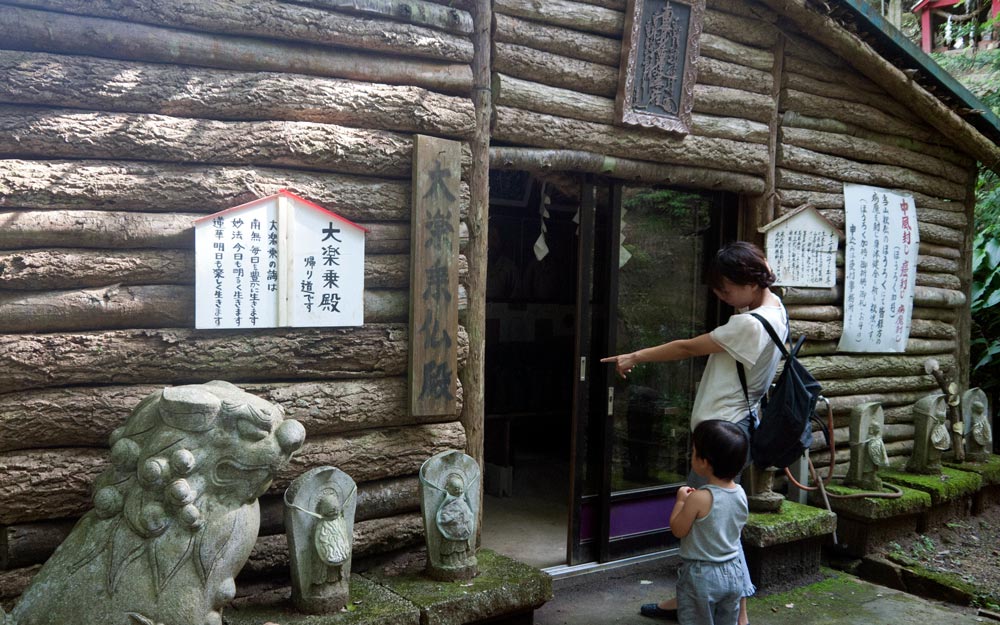
We also found a log house with a komainu that looked like Buggy from One Piece.
According to the signs, this log house is a temple too, and you have to pass through if you want to go home.
As interesting and unique as this collection was, it was a little confusing. Was it some kind of joke? Or was the caretaker monk maybe… a hoarder?
Inside was an enormous collection of black statues of Prince Shōtoku, a regent and politician during the Asuka period (538–710) who developed a cult following. We found out later there were six thousand of them! 😳
(While writing this article, I also learned this temple has a statue of Kannon, which was supposedly carved by the Prince himself. We didn't see it that day, but maybe that's why the monk who runs the temple chose to include so many statues of him.)
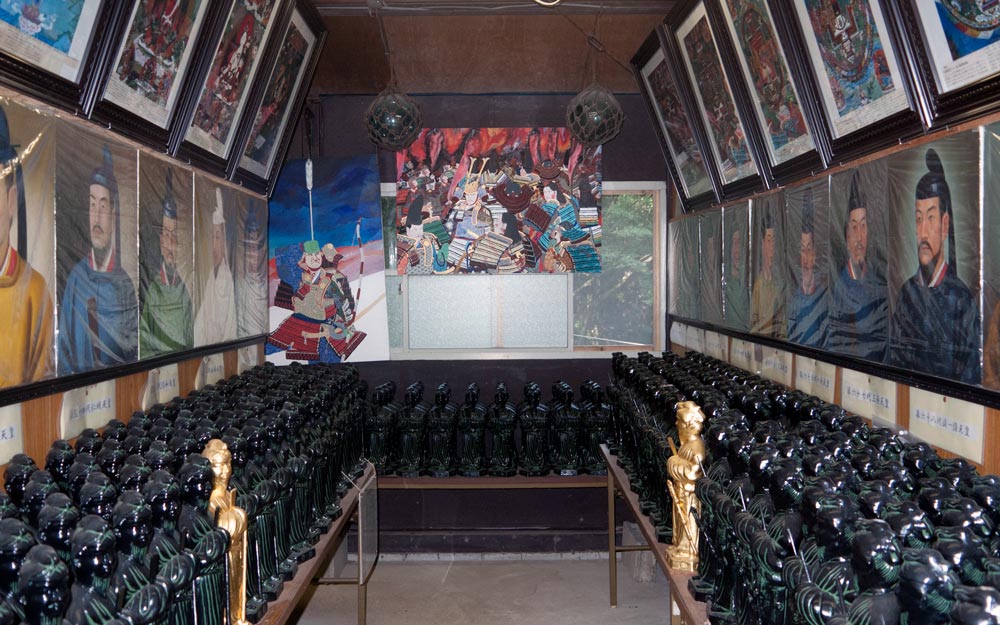
Above the Prince Shōtoku statues hung portraits of Japanese emperors from ancient eras—they were obviously painted from imagination.
Like the grounds around us, this temple too, was filled with a jumble of figures. We saw hina dolls, stuffed animals—even a poster of Chiyonofuji, the champion sumo wrestler!
As interesting and unique as this collection was, it was a little confusing. Was it some kind of joke? Or was the caretaker monk maybe… a hoarder?
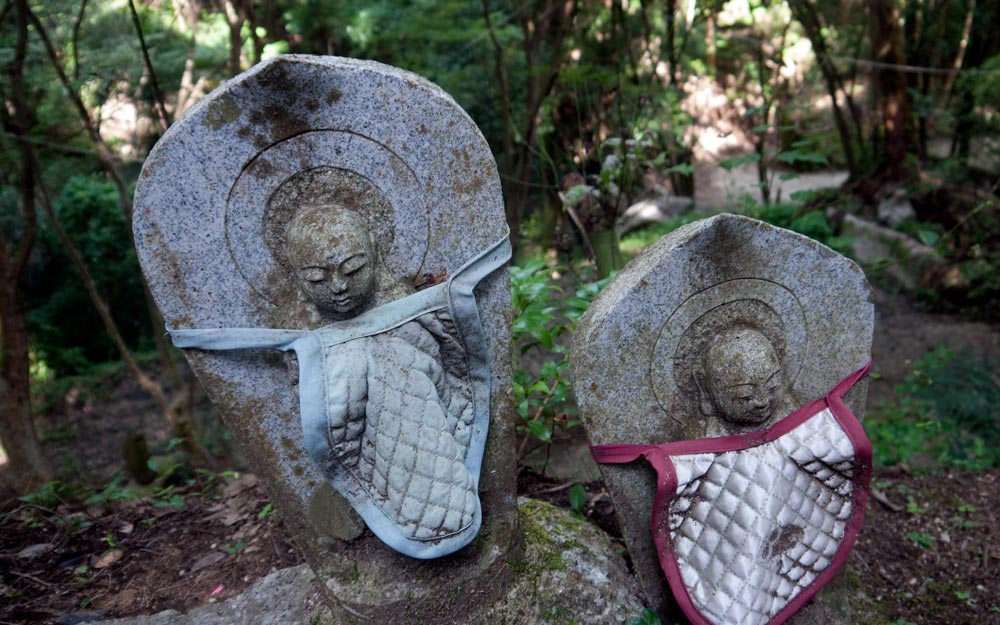
After leaving the log house, we encountered another group of Jizō statues, most of which wore bibs. It turns out that local women typically take care of Jizō as an offering to the Buddha, providing them with hand-knitted hats and hand-sewn bibs. We felt bad for the naked few that didn't have anything!

As we continued on, we saw beautifully-layered, mossy boulders with a statue head and a miniature Jizō placed inside the gap.
Frogs, a Peaceful Death, and Panties for Sale
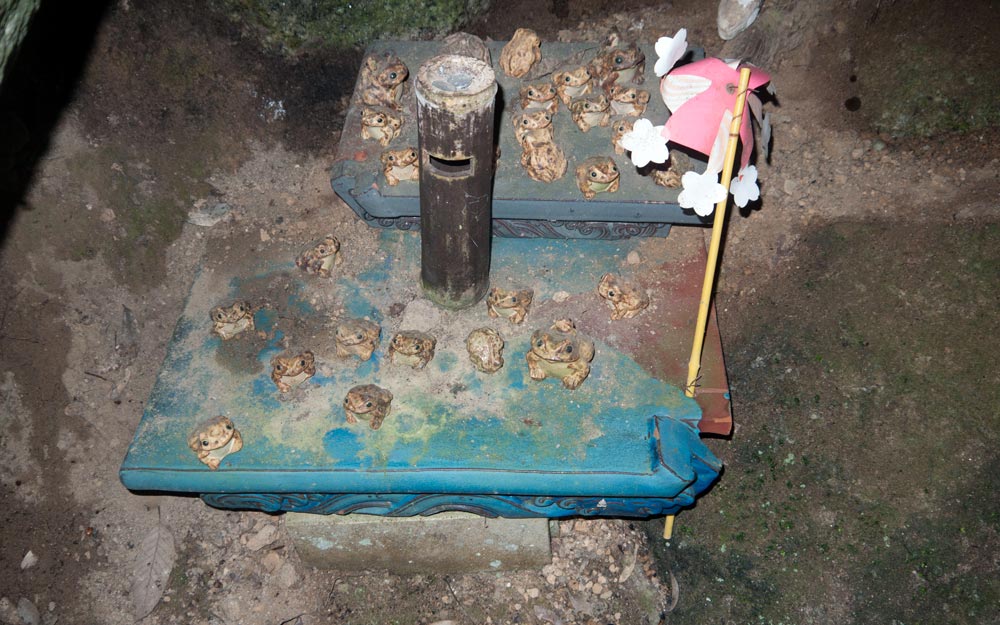
Near the boulders sat an army of carved frogs with an offertory pole and a sign that read:

SECRET
This is a house of Tsutohebi.
He loves frogs very much, so I placed these as a decoy.
Please commit your frogs as well, so that he will appear.- Tsutohebi Fanclub
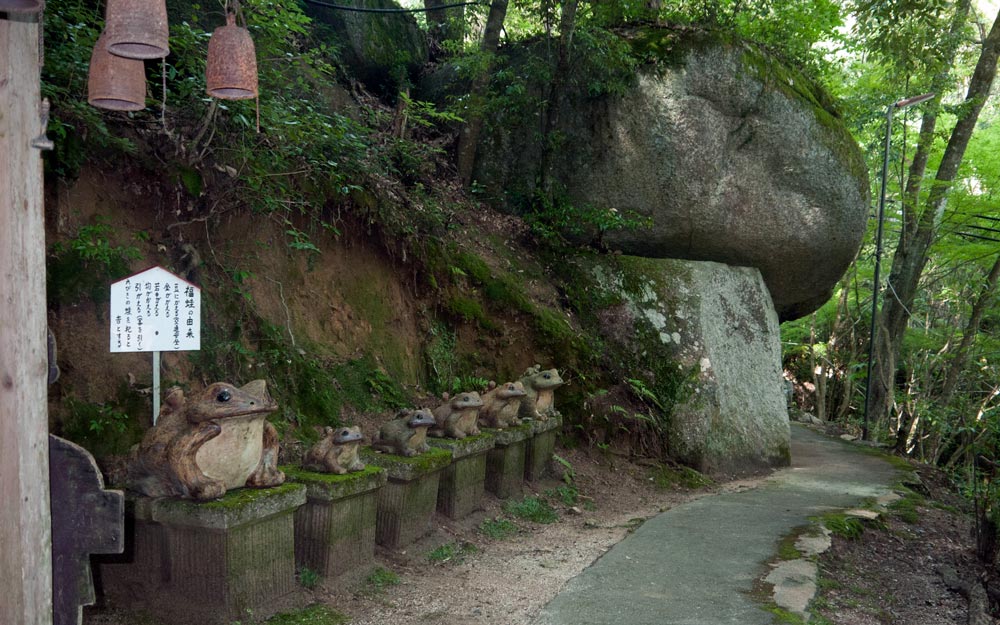
And when we turned the corner… more frogs!
According to this sign, these were lucky frogs, intended to provide traffic safety, the return of lost money and belongings, rejuvenation, and business prosperity. I hope Tsutohebi doesn't find these lucky frogs.
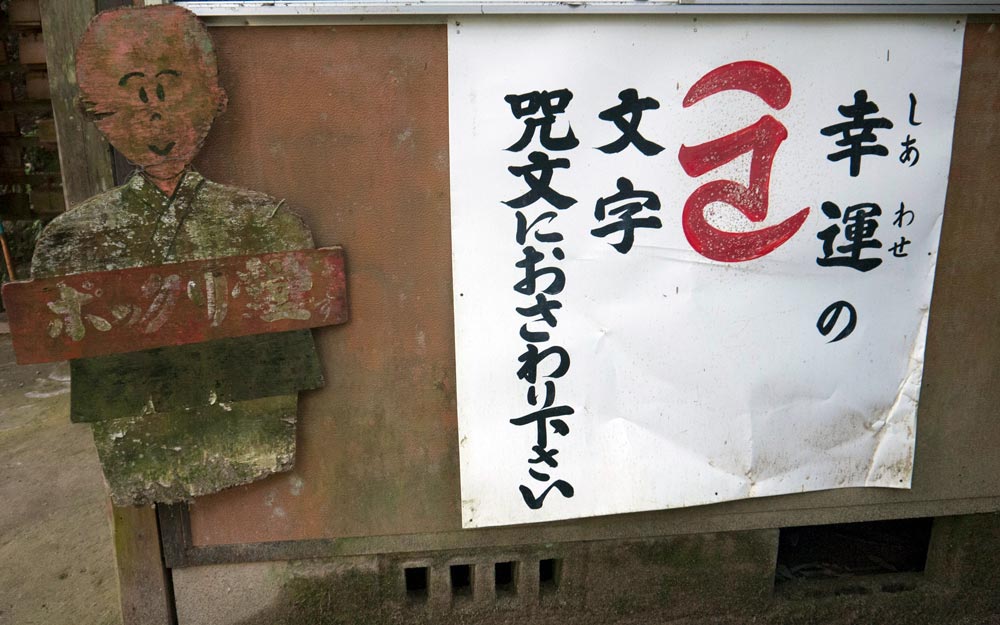
Up next was a pokkuri temple. Pokkuri is an onomatopoeia that describes someone passing away suddenly. A pokkuri temple is where you pray that you or somebody else will die a sudden, peaceful death while sleeping (rather than a violent, traumatic death). Japan has many of them.
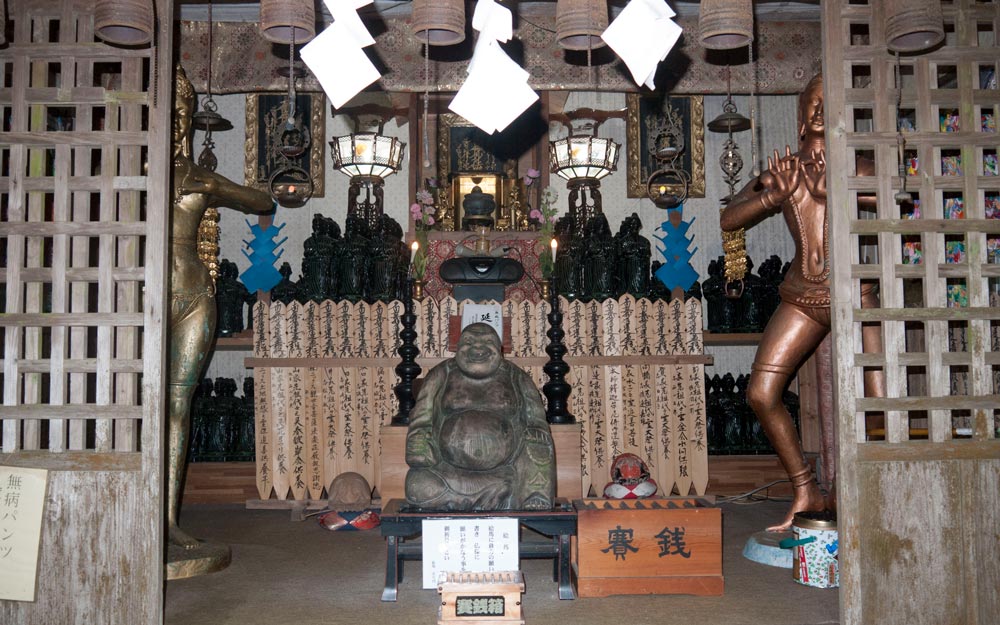
The inside seemed like a normal temple, but then…

HAHAHA, funny! This isn't the kind of pose you usually find your Buddhist statues in. Though we laughed at the sheer randomness of this statue at the time, later we realized this was an advertisement for the pokkuri panties (used to avoid illness), which are sold for ¥1,000 later in the tour.
(The monk probably ran out of space in the log house, because there were some Prince Shōtoku statues in this temple too.)
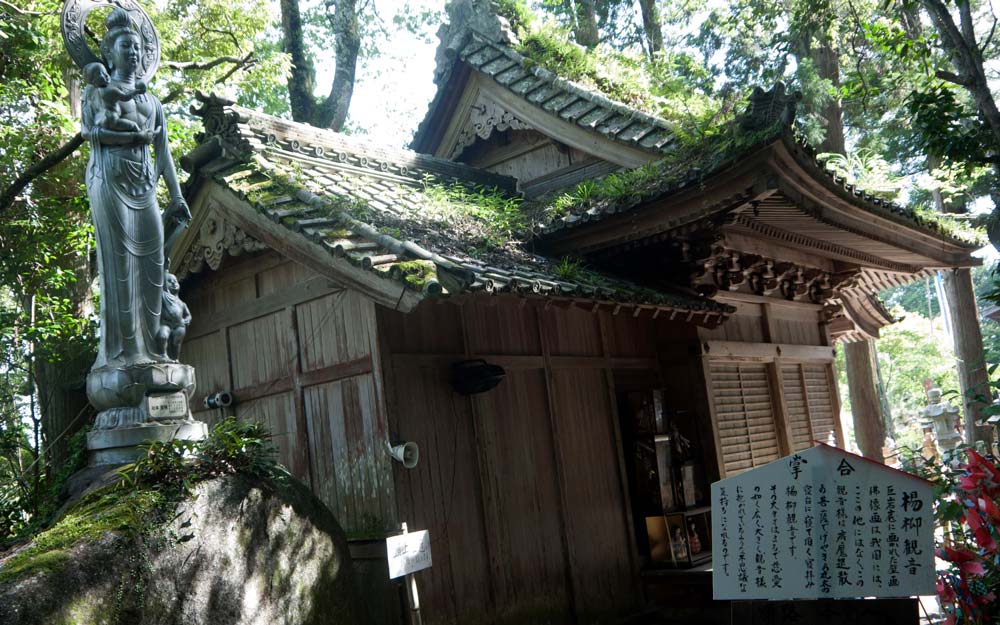
The next spot had another Kannon statue next to a normal temple building. I liked the grass and moss growing on the roof, though I'm not sure how good moss is for structural integrity.
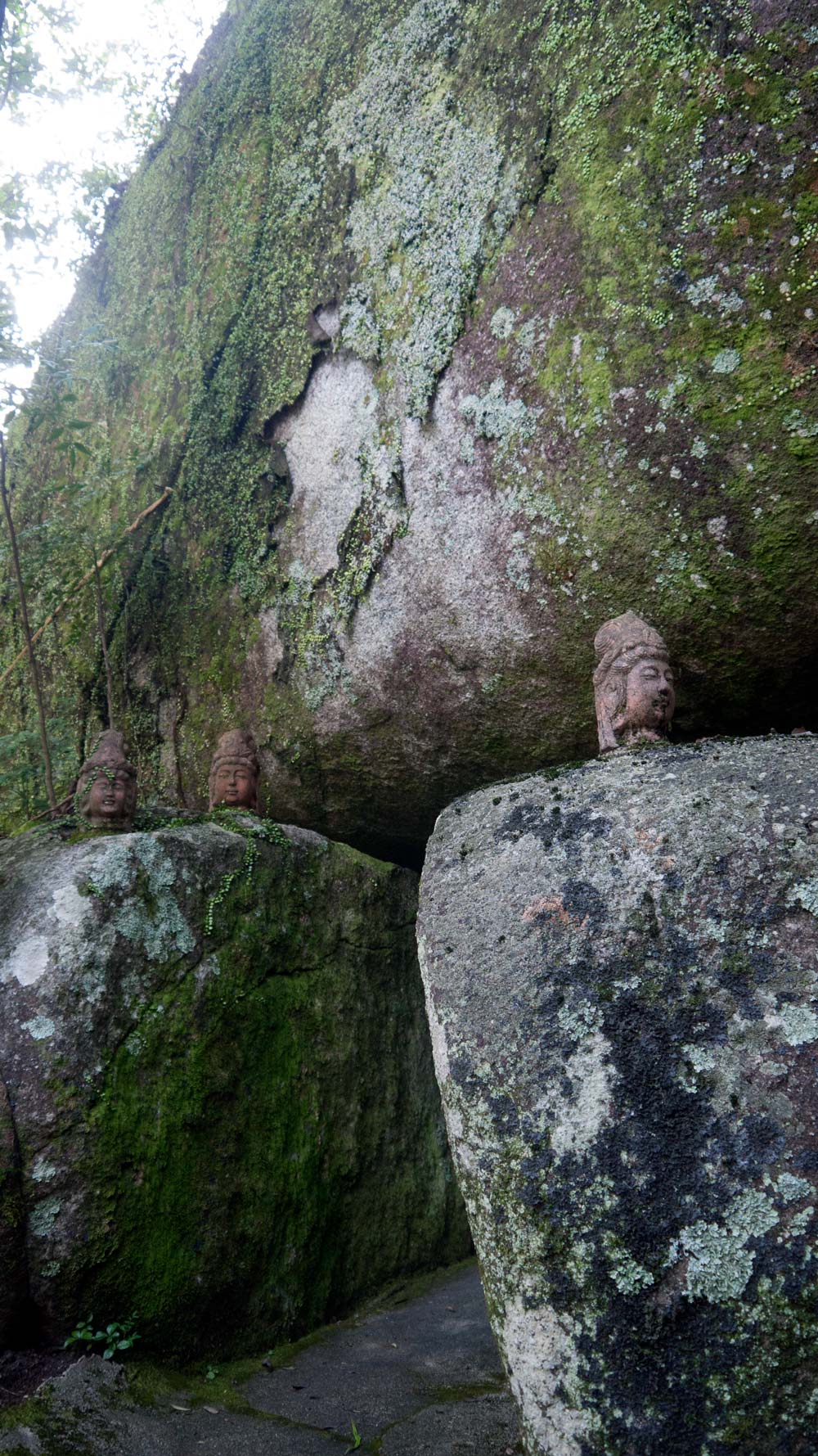
The caretaker can't seem to leave things as they are. Even beautiful boulders had Kannon heads on them. We wanted to ask him why, but we never saw anyone around who looked like a monk. In fact, we seemed to be the only people there at all.

Then we found two other tourists in a grotto beneath a massive, massive boulder. Even though the boulder suspended in the air by smaller rocks was impressive, we couldn't take our eyes off the couple. "Why would they choose to go on a date here?" we wondered.
We couldn't take our eyes off the couple. "Why would they choose to go on a date here?" we wondered.
After they left, we stepped in. It seemed to be an altar of some kind: the space was small with a low ceiling. The boulder above us was gigantic.
Another version of Kannon had been painted on the ceiling. We were supposed to lie on the wooden bench and pray to it, so we did. Kannon is described in mythology as being both male and female—in this version, he was clearly not the curvy goddess we had seen so many statues of earlier!
After our long walk, sitting here peacefully felt like meditation.

Next up was another temple building with a massive iron pipe omikuji (fortune slip).
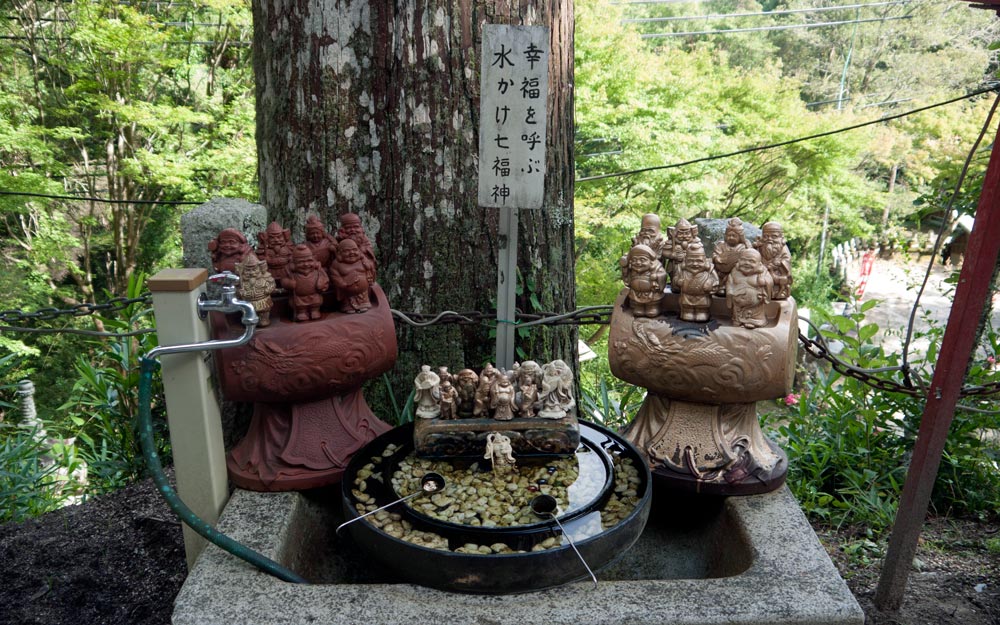
One of our fortunes said that if we poured water on the Seven Gods, we would be happy. So we did and chuckled. It worked! Looking at the water made us thirsty, though—we never expected the place would be this enormous, and we hadn't brought any drinking water.
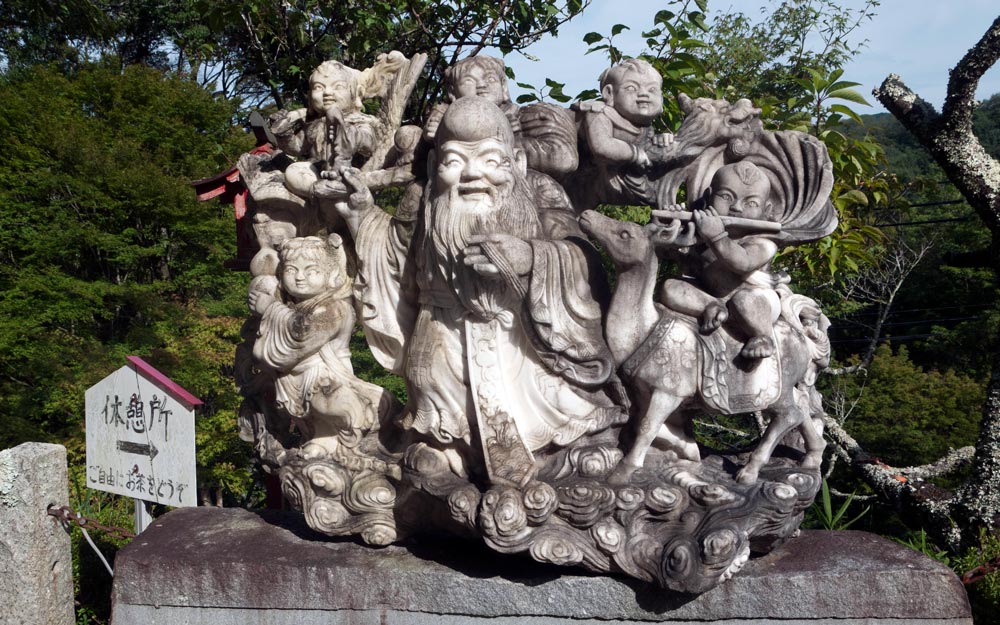
The End of our Fūtendō Journey
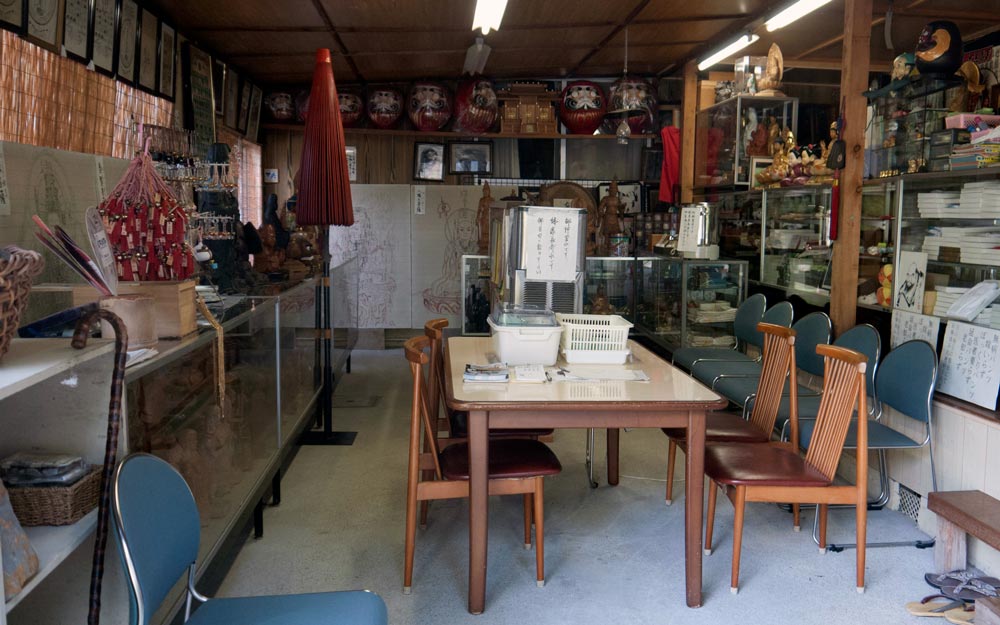
Even among the hundreds of statues, you'll probably find a few that intrigue you. Bring your own water and a jacket, though… and comfortable shoes.
Thankfully, a collection of happy statues let us know that a rest area was nearby. A rest area! We felt as cheerful as they looked!
The rest area was located next to the main temple, which likely served as the monk's house. The doors to both the temple and the rest area stood open, but nobody was inside.
Through the doors of the rest area, we found charms and other stuff for sale, including the pokkuri panties advertised earlier. But we couldn't find anyone to take our money! We did discover some free green tea, however, so at least we were able to quench our thirst.
We finished our tea and left the rest area. We couldn't really relax there—it felt too cluttered. Even though it was clean, it was filled with stuff and felt a little untidy.
After the rest area, we were able to return to the walking trail we came in on.
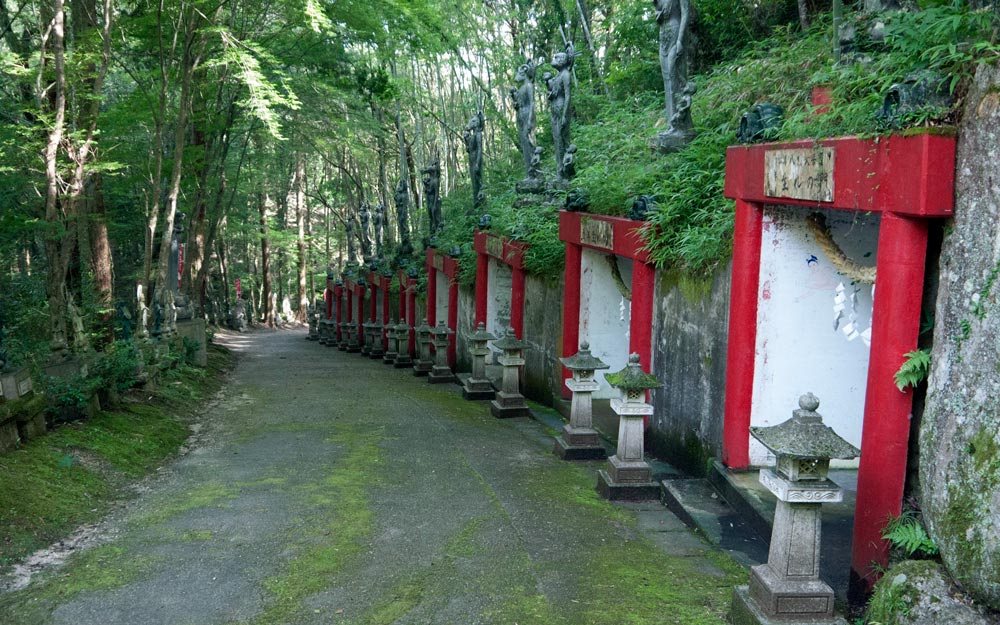
We waved at all the statues who welcomed us and headed down the hill.
Unless you're a statue maniac, someone who enjoys a lot of walking, or an ancient Japanese religious icon buff, this place might not be to your liking. Yet, even among the hundreds of statues, you'll probably find a few that intrigue you. Bring your own water and a jacket, though… and comfortable shoes for walking, hiking, and exploring slippery caves!
Although it wasn't the crazily unique place I was hoping for, I quite enjoyed the walk, the beautiful natural sights, and the strange rock cave. If you're ever nearby and want to experience these aspects, I would recommend it. The place is rumored to be spectacular in the fall, when the leaves change color.
Mami’s Review
Though I had higher expectations due to what I read online, and it didn’t live up to my expectations, it was actually an enjoyable and unique walk, considering. I liked the rock cave and the massive boulder. Maybe they needed statues to get people to visit this remote mountain, but I wish they hadn’t put in so many. I personally think that the place would have been much better without them. Because of the unnecessary statues, I give this place a thumbs down.
Fūtendō Cave at Iwatoyama Kanzeonji
Additional Information
Yokoteyama-5 Ōkurachō
Toyota-shi, Aichi-ken 444-2511
Japan
